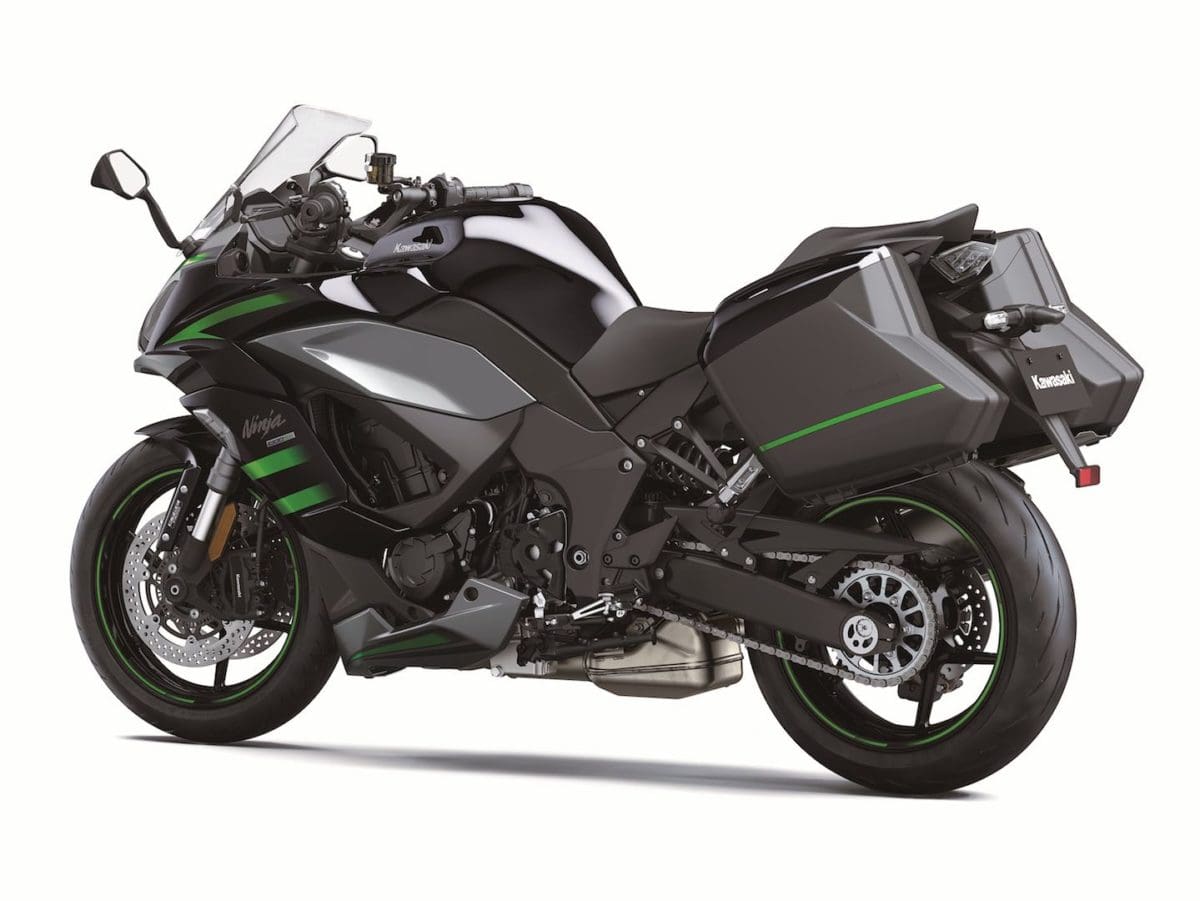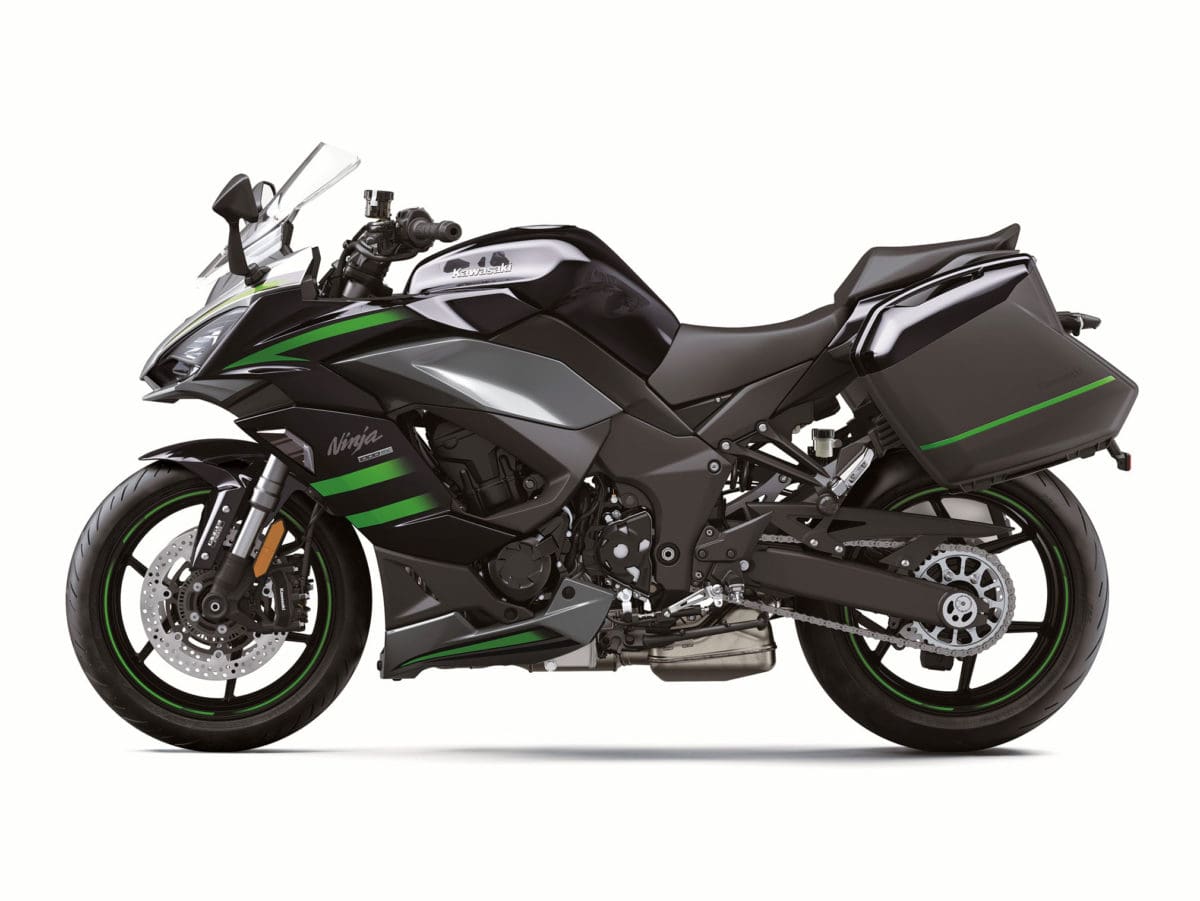
By Dave Manning, Motorcycle Sport & Leisure magazine
Bringing the top model in Kawasaki’s sport tourer range into line with the rest of the road bike range – giving it the Ninja moniker – isn’t just a nostalgic reminder of bikes like the original 1984 GPz900R, but gives the new Z1000SX a sportier sell, alongside a few tweaks to its design and specification.


And that spec comes in a combination of three levels. Firstly there’s the standard machine, as seen here, but with additional panniers. Then there is the Performance edition, which is equipped with a carbon fibre Akrapovic exhaust can, pillion seat cover, frame siders, a smoked windshield and a tank pad. The Tourer edition also has the tank pad, and also a larger (clear) windshield, the 28 litre hard panniers and inner bags, heated grips, a GPS bracket and a protector for the TFT screen. And then there’s the Performance Tourer edition which is, as you can probably guess, a simple combination of all of the parts from the Tourer and the Performance editions.

Much like many of Kawasaki’s new models, a lot of pre-riding talk has been about the electronics package that is included with the new machine. Aside from three riding modes of Rain, Road and Sport, there’s also a Rider mode in which the power modes can be altered to suit your own style, and traction control can be turned off. The TFT (Thin Film Transistor) screen can also be connected by Bluetooth to your phone and, by using the Kawasaki Rideology App, you can also alter these settings at a distance. The app, and the screen, can also display all manner of information, including fuel consumption and lean angle (left and right), while the screen can also display if your mobile device has received and email, or you’ve had a missed call.

The styling has been tweaked from last year’s version of the Z1000 SX, with a slightly more aggressive and angular profile to the headlight surround and a new four-position screen, while the rear of the bike has been considerably improved with the loss of last year’s huge quadruple exhaust cans, replacing them with a single silencer on the right hand side.
With the choice of a standard seat giving a seat height of 835mm, and two options lowering it by 15mm or 23mm, despite being wider than the previous model, the seat still allows average legs to put average feet on the floor. With a set of high bars at a comfortable reach, the ergonomics are spot on, both for around town pottering, trans-continental touring and back road scratching, all of which can be easily undertaken with the incredibly-flexible engine. It’ll pull from incredibly low revs – 25mph in top gear is really easy – yet still has the charismatic Kawasaki howl as you pass 6,000rpm and head towards the redline.
Smooth acceleration is aided by the quickshifter – which works up and down the ‘box – which will help to give pillions an easy ride, although it is a little notchy if used with a fixed throttle position rather than when rolling the throttle on.

The mirrors are amongst the best that I’ve used on a bike, and are perfectly placed not only for rearwards vision, but also for gauging gaps in traffic to thread through, being a perfect match for the width of the panniers and mounted far enough forward on the fairing to easily judge the space available. Mentioning the panniers, not only are they easy to access (and have a soft liner), but can also be detached in seconds – an important consideration both for the times that you want to offload your luggage to take to your hotel room, and for the times when you don’t want all that luggage mounted on your bike when you want to squeeze it into your garage, or have it unloaded for commuting etc.
The luggage and comfort cover the ‘tourer’ element of the bike, but what about the ‘sports’ bit? 140bhp doesn’t sound like much in these days of 200bhp litre bikes, but it’s still enough to propel the Ninja to in excess of 150mph, and it also displays an impressive talent at going around corners, with enough ground clearance to ensure all of the tyres can be used, right to the edge, and an ability to flick from left to right that might take a little more muscle than, say, a ZX-6RR, but is far easier than any bike with this kind of comfort should provide. It also proved incredibly stable, not being upset by adverse cambers, overbanding or tarmac cracked and lifted upwards by tree roots. In short, a great way of touring, either at leisure, or at a sporty pace.

In green or white, the basic model is £10,999, for which you get a lot of tech and performance, but you’ll have to pay an additional £200 for the grey paint scheme seen here. The Performance or Tourer versions are an extra £1000, and those basic sums also mean that the Performance Tourer model with all the bells and whistles is £12,999.
For the full ride report on the new Kawasaki Z1000SX Ninja, be sure to get your hands on the upcoming issue of Motorcycle Sport and Leisure magazine. For more information on how to get hold of a copy, click HERE. And for more information on the Kawasaki, click www.kawasaki.co.uk



